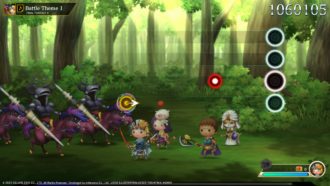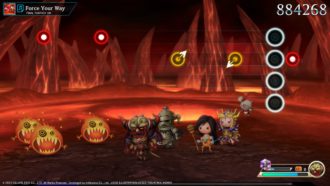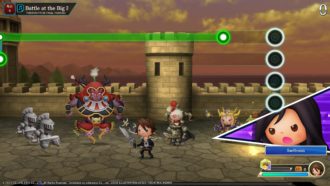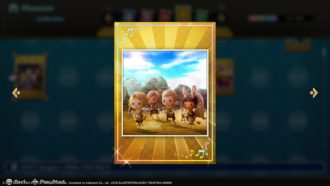Platforms:
PS4, Nintendo Switch
Released:
February 16, 2023
Publisher:
Square Enix
Developer:
Square Enix
Theatrhythm: Final Bar Line is the epic compilation that Final Fantasy music aficionados have been waiting for. Including close to 400 tracks from across Square Enix’s RPG series and spin-offs, the game is the ultimate dose of Final Fantasy musical nostalgia and a fine rhythm game all on its own. Just don’t go into the experience looking for much more than that.
Theatrhythm: Final Bar Line separates its tracks into 29 different series according to which game they’re from. This includes the 15 mainline games, spin-offs of individual entries like Final Fantasy VII’s various sequels and prequels, and also spin-offs of the franchise as a whole such as Final Fantasy Tactics and Dissidia: Final Fantasy. As a series veteran, I found some of the deeper cuts into Final Fantasy history gratifying; I don’t know how many other people will know what Final Fantasy Mystic Quest is or care that it is represented, but it’s nice to see nonetheless.
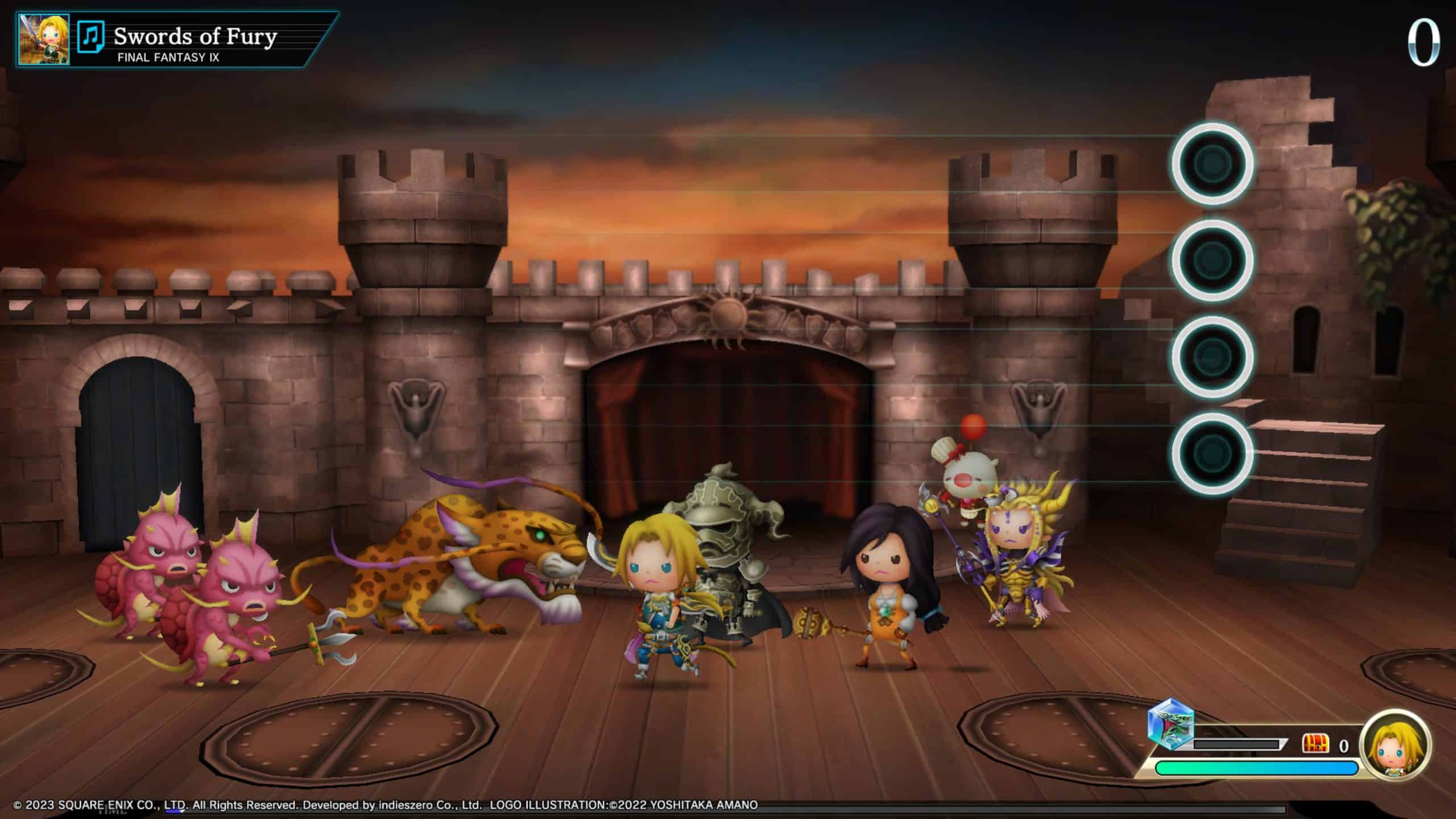
The game has three main modes; Series Quests, wherein the player goes through and unlocks each series, Music Stages, where the player can pick any unlocked track, and Multi-Battle, a multiplayer mode. Theatrhythm: Final Bar Line is still technically a Final Fantasy RPG, so before you even start a track you must create a party. When you unlock a new series, you gain access to some of that game’s main characters that you can add to your party and level up.
Each character has different strengths, such as recovering HP, making it easier to unlock items, or dealing more damage. They also unlock new passive abilities as they level up, of which three can be assigned at one time. I eventually formed a dream team of Squall from FF8, Gabranth from FF12, Garnet from FF9 and The Emperor from FF2. I was a bit disappointed by some of the notable absences of potential party members; for instance, the majority of the expansive rosters of FF4, 6 and 10 are not playable. I guess the intention was to provide more-or-less equal representation per game, but many fans’ favourite characters remain unrepresented.
While it is tempting to just pick a party of your favourite characters without thought for composition, it becomes crucial to have an adequately high-levelled party with the right abilities if you want to tackle some of the game’s higher difficulties and tricky challenges. The melding of RPG and rhythm mechanics can feel a bit incongruous at times; if the challenge is defeating a boss but your characters are not high levelled enough, then even if you don’t miss a note, you may still fail the challenge. Fortunately, levelling up your party is not too hard, particularly with the aid of experience-multiplying items that the game generously provides.
The actual rhythm mechanics are very engaging and more complex than Theatrhythm’s 3DS forebears. The addition of a second analogue stick and more buttons increases the number of potential inputs, throwing in dual button and dual stick prompts and other combinations of holds, taps, and slides. The Beginner and Expert difficulties keep things manageable, but anyone seeking to attempt Ultimate or Supreme difficulty modes will need to master the controls and have lightning-fast reflexes to survive. For those less experienced with rhythm games or who want a more relaxed experience, there is a wide array of accessibility options, ranging from turning down the background animations to editing the timing for the triggers and background music.
“…Theatrhythm doesn’t try to incorporate a plot or pretend that the game has any objective outside of nostalgic musical fanservice.”
Outside of unlocking new characters and Collectacards (fun little images of classic Final Fantasy characters and locations) and chasing high scores, there isn’t all that much there for solo players. Unlike Kingdom Hearts: Melody of Memory, Theatrhythm: Final Bar Line doesn’t try to incorporate a plot or pretend that the game has any objective outside of nostalgic musical fanservice.
There is an Endless Mode that you unlock after the end credits, but that is basically just an endless gauntlet of playing through your unlocked tracks until you lose all of your lives. While a plot or some sort of structured challenge outside of the Series Quests wouldn’t necessarily have improved the experience, its absence does feel like a missed opportunity.
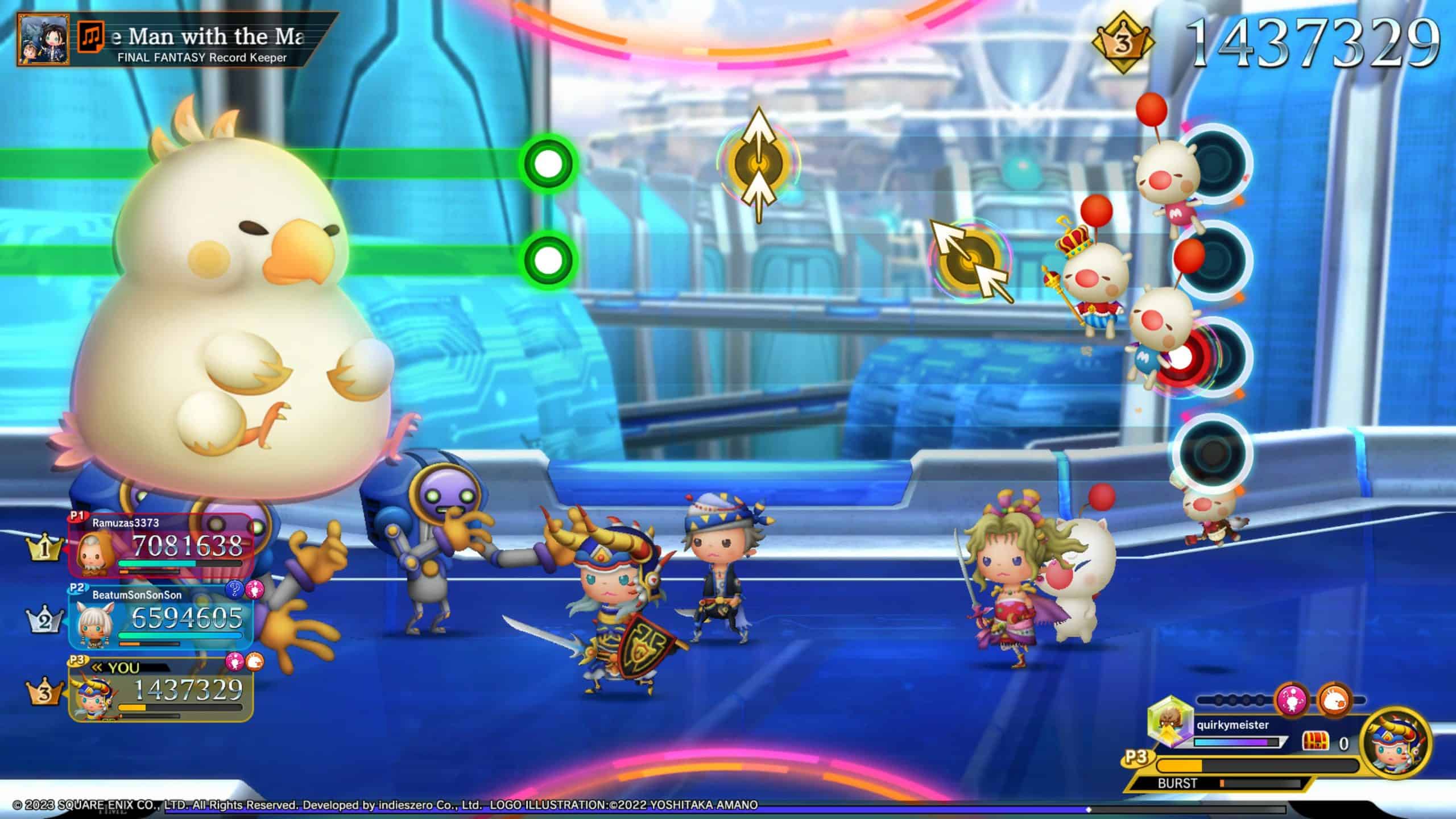
When you’re done with the single-player content and ready to try your hand at the online multiplayer, there is the Multi-Battle mode. In this mode, players compete at the same track against up to three other players to achieve the highest score. This mode has many unique modifiers and hazards, such as fake-out prompts that you’re supposed to ignore and a Fat Chocobo that hogs the left side of the screen and obscures the upcoming prompts.
I quite enjoyed the Multi-Battle mode, and even if you come last, you still receive a Collectacard and experience for your party. Players can also trade profile cards and summonstones following a Multi-Battle.
In terms of the presentation, I liked the adorable 2D incarnations of classic Final Fantasy characters in Theatrhythm: Final Bar Line. The backdrops are also all pulled from classic Final Fantasy locations, from FF8’s Balamb GARDEN to the streets of Rabanstre from FF12. As an art style, it makes each character recognisable and appealing, without the characters or the little battles and animations being so intricate as to distract from the prompts that you need to pay attention to.
As far as the tracks that were picked, I don’t know what to think about the inclusion of the original OST from the classic games over more modern remixes and orchestrations from recent remakes. Particularly after the gorgeous orchestrated soundtracks of the recent Final Fantasy Pixel Remaster series, playing along to the original Final Fantasy 2 version of the Chocobo Theme, which on the NES was a mere 6-second loop, felt a bit jarring. While it is intended as part of the overall nostalgia package, it feels like an opportunity was missed to include the option to play along to those more modern arrangements of those classic tunes, rather than only having a somewhat limited selection of tracks to choose from as far as remixes go.
7.5
Good
Positive:
- Nearly 400 tracks of Final Fantasy musical nostalgia
- More complex prompts provide a satisfying challenge for rhythm game veterans
- Multi-Battle mode is surprisingly robust and provides unique challenges
Negative:
- Lack of plot or much of a structured challenge may leave game feeling insubstantial for solo players
- Many iconic Final Fantasy characters remain unrepresented in the roster
- Lack of rearranged tracks from classic games feels like a missed opportunity
If you’re a longtime Final Fantasy fan who greatly appreciates the franchise’s musical legacy, Theatrhythm: Final Bar Line is a game that celebrates that. It holds up as a rhythm game, with complex and engaging gameplay and decent integration of obligatory Final Fantasy RPG mechanics. With its expansive track list, adorable visuals, and large roster of characters to collect, it is a joy to play through the musical history of this classic RPG series, either alone or against others. While it doesn’t really aspire to be much more than that, if you are fine with that, then Theatrhythm: Final Bar Line is certainly worth checking out.
